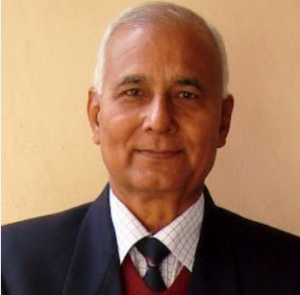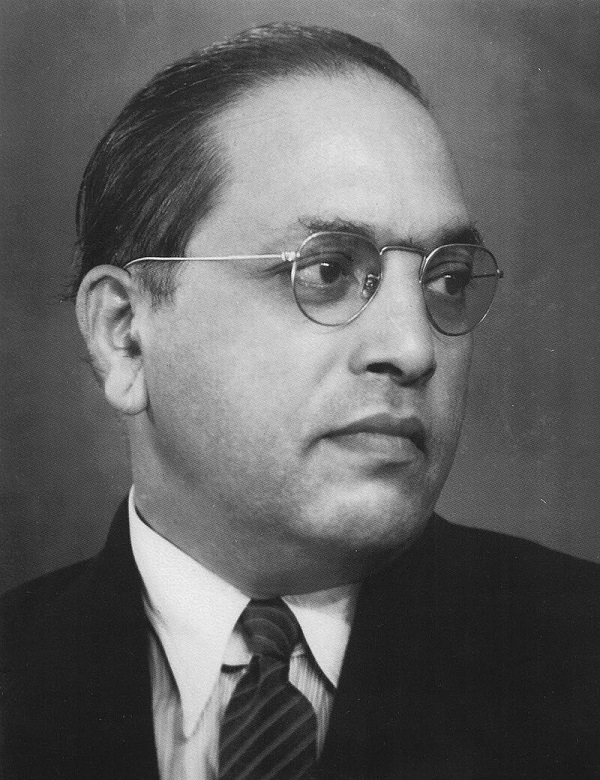SR Darapuri, National President, All India peoples Front

(Asian independent) B.R. Ambedkar, often hailed as the “Father of the Indian Constitution,” played a pivotal role in its drafting, but he did not have an entirely free hand. His influence was profound, yet constrained by the collaborative nature of the process, political dynamics, and the broader context of India’s transition from colonial rule to independence. As of April 07, 2025, historical scholarship and primary records provide a clear picture of his contributions and the limits he faced.
Ambedkar’s Role and Appointment
Ambedkar was appointed Chairman of the Drafting Committee of the Constituent Assembly on August 29, 1947, a body tasked with framing India’s Constitution after independence. His selection was not automatic; it came after intense political manoeuvring. Initially, Ambedkar was elected to the Constituent Assembly from Bengal with Muslim Legue support, but lost his seat due to Partition. Jawaharlal Nehru and Sardar Patel, recognizing his legal acumen and advocacy for marginalized groups, ensured his re-entry from Bombay, backed by Congress votes. This appointment reflected trust in his abilities—evidenced by his Columbia and London education, bar qualification, and authorship of works like *The Annihilation of Caste*—but also a strategic move to balance caste and regional representation.
The Drafting Committee, a seven-member panel including Ambedkar, Alladi Krishnaswamy Ayyar, N. Gopalaswami Ayyangar, and others, was one of several sub-committees under the Constituent Assembly, which comprised 389 members (later reduced to 299 post-Partition). Ambedkar’s role was to synthesize inputs from these committees, Assembly debates, and external influences into a cohesive draft, not to author it unilaterally.
Extent of Influence
Ambedkar’s imprint is undeniable in key areas:
– Fundamental Rights: He championed Articles 14–18, ensuring equality before the law, abolition of untouchability, and non-discrimination, reflecting his lifelong fight against caste oppression.
– Directive Principles: He supported state-led social welfare (Articles 36–51), inspired by his socialist leanings and the Irish Constitution.
– Federal Structure: He advocated a strong Union to prevent India’s fragmentation, drawing from his study of the U.S. and British systems.
– Reservations: He secured affirmative action for Scheduled Castes and Tribes (Articles 15(4), 16(4)), a hard-won concession rooted in his negotiations with Congress leaders.
His first draft, presented on February 21, 1948, spanned 243 articles, blending parliamentary democracy with social justice—a vision he articulated in speeches like his November 25, 1949, address, warning against inequality undermining democracy. Over 7,635 amendments were proposed during Assembly debates, with 2,473 adopted, showing his draft was a starting point, not the final word.
Constraints and Compromises
Ambedkar operated within significant limits:
- Congress Dominance: The Congress Party, holding over 80% of Assembly seats, shaped the Constitution’s direction. Nehru and Patel favoured a centralized state and secular framework, sometimes clashing with Ambedkar’s more radical social reforms. For instance, his push for a stronger socialist agenda (e.g., nationalization of land) was diluted in favour of milder Directive Principles, non-enforceable by courts.
- Gandhi’s Influence: Mahatma Gandhi’s advocacy for village-centric governance (e.g., Panchayati Raj) conflicted with Ambedkar’s urban, state-driven vision. Ambedkar criticized Gandhi’s village romanticism, but compromises like Article 40 (promoting village panchayats) were included to appease Gandhian factions.
- Committee Collaboration: The Drafting Committee worked alongside experts like B.N. Rau, the Constitutional Adviser, who prepared an initial framework after studying global constitutions. Rau’s 1946 draft heavily influenced Ambedkar’s, and inputs from members like Ayyar (a legal scholar) refined technical aspects.
- Hindu Code Bill Frustrations: Ambedkar’s broader vision for social reform—especially on caste and gender—met resistance. His ambitious Hindu Code Bill, aiming to reform marriage and property laws, was stalled by conservative Assembly members and later dropped in 1951, prompting his resignation as Law Minister. This reflects how his constitutional influence was curtailed outside the Drafting Committee.
- Time Pressure: With independence in 1947 and Partition chaos, the Assembly faced urgency to finalize the Constitution by January 26, 1950. This limited radical experimentation, forcing Ambedkar to prioritize consensus over personal ideals.
Negotiations and Tensions
Ambedkar’s relationship with Congress leaders was complex. He clashed with Patel over state powers and with Nehru over socialism’s extent, yet earned their respect for his pragmatism. His insistence on abolishing untouchability (Article 17) faced little opposition, but proposals like separate electorates for Dalits—abandoned after the 1932 Poona Pact—were off the table by 1947. Debates over religious personal laws also saw compromise: Ambedkar favoured a uniform civil code (Article 44, a Directive Principle), but Muslim and Hindu conservative pressure kept it aspirational, not mandatory.
Historical Assessment
Scholars like Granville Austin (*The Indian Constitution: Cornerstone of a Nation*) credit Ambedkar with steering the document toward social justice, but note the Assembly’s collective ownership. Nehru called it a “team effort,” while Ambedkar himself acknowledged in 1949 that he worked under “instructions” from the Assembly, downplaying sole authorship. His Buddhist conversion in 1956 and critique of Hinduism suggest he felt the Constitution fell short of his transformative vision.
Conclusion
Ambedkar did not have a free hand in framing India’s Constitution. He was a towering figure—shaping its egalitarian core and safeguarding Dalit rights—but operated within a collaborative, Congress-dominated framework, balancing his ideals with political realities. His genius lay in navigating these constraints to produce a document that, while not fully reflective of his radicalism, remains a global benchmark for democratic inclusivity. His hand was guided, not unbound, making his achievement all the more remarkable.
Courtesy: Grok 3
S.R. Darapuri I.P.S.(Retd)
National President,
All India Peoples Front
www.dalitliberation.blogspot.com
www.dalitmukti.blogspot.com
Mob 919415164845








